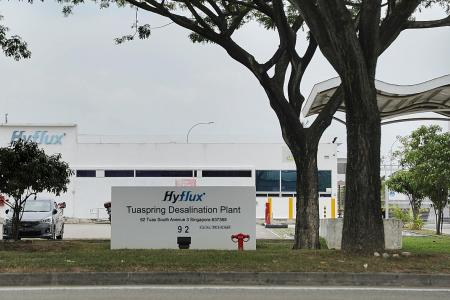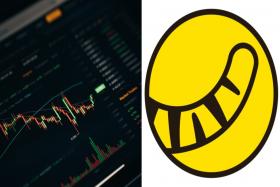Hyflux’s financial woes result of its own commercial decisions: EMA
Gas industry regulator responds to claims in letter published in newspaper
Hyflux's financial woes are a "result of its own commercial decisions" and not down to actions by regulators, the Energy Market Authority (EMA) said yesterday.
The gas industry overseer was responding to claims made in a letter to a newspaper that vesting contracts and policy changes led to lower electricity prices which in turn contributed to the firm's dire financial situation now.
EMA said the writer, Mr Leong Mun Wai, "had drawn the wrong conclusions" and that Hyflux had "full knowledge of the gas supply situation and electricity generation market".
It added that in 2009, it offered the liquefied natural gas (LNG) vesting scheme to generation companies (gencos) to encourage the uptake of LNG. Gencos opted into the scheme "based on their own commercial considerations".
While the EMA offered up to only 1.2 million tonnes a year of LNG under vesting contracts, the gencos bought more than twice as much. They then made their commercial decisions to build additional generation capacity to consume this.
At that time, wholesale electricity prices were high but the subsequent increase in generation capacity has led to a decline.
The agency added that Hyflux does not have any LNG vesting contracts and had decided to build its power plant after contracts were awarded to other gencos.
So when Hyflux made its decision, it would have been aware of plans by other gencos to increase their generation capacity as this was publicly available information, it said.
The regulator said it was incorrect for Mr Leong to claim that Hyflux's problems were caused by "an unexpected domestic policy change".
Mr Leong also suggested that Hyflux's management was perhaps "blinded by the potential huge profits if electricity prices had stayed at around $200 per MWh, the price in 2012 when the decision was made".
The company committed to a high-priced gas supply contract with no corresponding mechanism to protect itself against the decline of the electricity price.
He also said the collapse in electricity prices was the "direct result of the vesting contracts given to the other gencos in return for their support to sign long-term take-or-pay supply contracts from the LNG terminal, itself another national project".
Mr Leong added as a result of the vesting contracts, gencos expanded capacity rapidly, resulting in a reserved margin of 80 per cent instead of the normal 30 per cent, sparking the price collapse.
The letter published in The Business Times last Tuesday also said that the EMA "did not render relief to Hyflux at an early stage" to buffer it from the unintended results of the vesting contracts.
Environment and Water Resources Minister Masagos Zulkifli said on Monday that the Government cannot use taxpayer money to bail out Hyflux investors. - THE STRAITS TIMES
Get The New Paper on your phone with the free TNP app. Download from the Apple App Store or Google Play Store now



